It’s been a great couple of weeks of rolling with the students’ curiosities and saying ‘let’s find out more’! How could a double bass look small and sound high, can you play a ukulele in a Heavy Metal band, and how can a lady dance in a fish tank? ‘Going with the flow’ has led to some fascinating discussions about how things appear. How something seems to be, what it could be and what it actually is has had many pieces of student ‘jigsaw insight’ being shared to form a picture of possibility. Please read on for more…
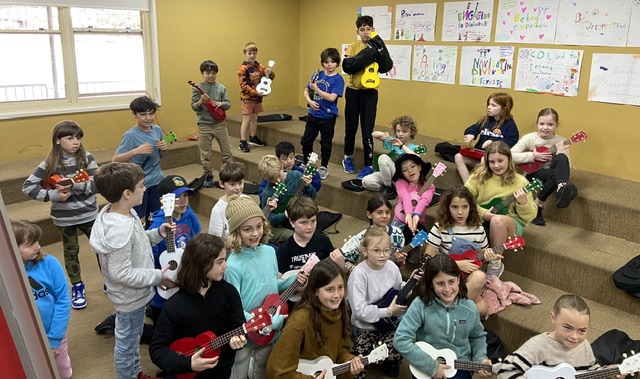
With the Year 2s, we were exploring how the choreography of movements we perform to the music Aquarium by Saint-Seans, relates to the music? Specifically, we were looking for words to describe the orchestral sounds and our gestures. The students used their bodies and voices to imitate the music and made super connections between words, gesture and sound until some asked, ‘but how can she dance under water?’ Eager hands shot up with suggestions and we were off down a ‘curiosity track’.
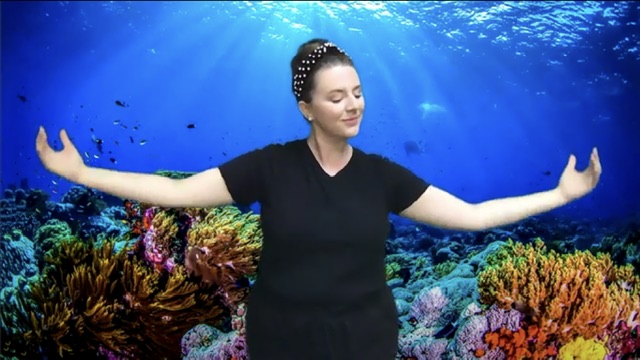
’Obviously it’s a green screen.’ ‘No it’s not, the fish aren’t moving.’ ‘Why can’t we see any projection on her face?’ ‘The coral looks like it’s been coloured in by Textas.’ ‘They put her in after.’ ‘No, she got filmed first and then they put the background in.’ ‘You do it with an app.’ Having danced an underwater story of aquarium gestures inspired by jelly fish, seaweed, darting schools of tiny fish, seahorses and playful seals, and only ever by listening to the music with imaginations prompted by gestures, this image provided another visual entry point and an opportunity to discuss understandings of technology. We also marvelled that Saint-Seans’ idea of an aquarium was so evocative and inspiring in our imaginations. Ever more so because he wrote the music 140 years ago. That’s a wondrous thought!
There are so many ‘Hits and memories’ with Sain-Seans’ orchestral suite Carnival of the Animals. With the Year 1s we lay down on the floor and closed our eyes for the first hearing of another movement from this suite played by a solo for double bass accompanied by piano. Next we moved about the room thinking of gestures that reflected the music. It was obvious, big sweeping movements, slow giant steps and bulky heavy moves; they all guessed ‘elephant’! Super, and, ‘hmmm’! With the lesson plan completed in ten minutes, where to now? Then Louie piped up, ‘I don’t think it sounds low!’ Now the discussion was on. There was a unanimous conclusion that it is the violins that sound high because they are small, and because double basses are the biggest instruments they sound the lowest… or are they? Time to introduce the octo bass, which has Louie grinning because now the double bass does sound high!
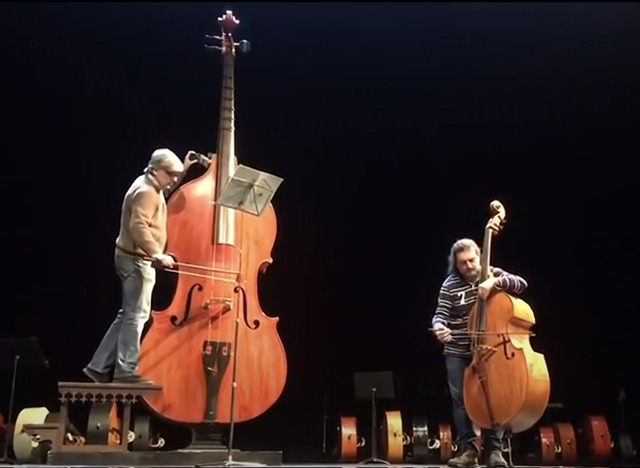
The octobass is so low that our ears can’t actually hear the fundamental pitch, so, what we hear are the overtones, or upper partials. What the octobass provides is a sub-sonic rumble, a massive low rumble that we feel more than we hear, and that’s why it was invented in the mid 1800s, to provide a rumble sensation for opera going audiences. It’s a bit like the sub vibrations we feel in a movie cinema when a low rumbling sound track accompanies a huge space ship cruising across the screen. On the octobass, the distance between where you bow the instrument and where your fingers change the pitch on the finger board is so great, that pitches are changed by padded ‘mechanical fingers’ operated by levers at the base of the instrument’s neck! The octobass was still a facination for students when recess arrived as we were imagining how the instrumentalist would pack up and move his octobass!
Meanwhile, ukes have become über cool!
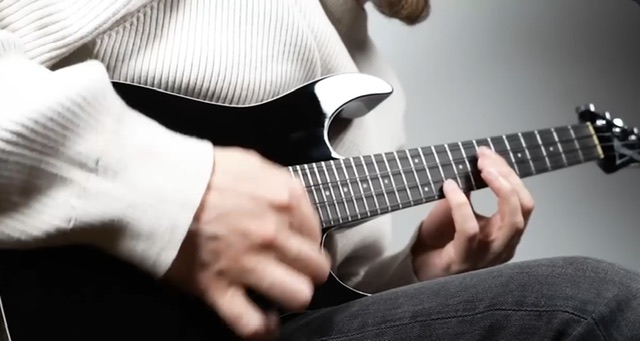
As you may recall, all budding Uke Clubs here at school feel they have ‘arrived’ when they can have an all-out strum to Thunder by Imagine Dragons. It clears the air and over rides our habit patterned brains for a couple of minutes. There is a fabulous range of ways that a uke can connect you to your music. We have bopped along with the Ukulele Orchestra of Great Britain, a great band with every shape and size of uke covering a huge range of popular music. We all adore Isreal Kamakawiwo’ole’s voice and uke cover of Over the Rainbow, and Jake Shimabukuro’s elegant and riveting rendition of Bohemian Rhapsody. Today, with the Yr 34s, we experienced Bernth’s distilled Heavy Metal style with his lyrical and flash performance on a solo tenor uke. This little instrument, which was once a budding hybrid of the Portuguese machête and rajao when it first took Hawaii by storm 140 years ago, has a great horizon of potential. It’s easy to learn, fun in groups, accessible via so many super You Tube play-along tunes and tutorials, easy to transport (unlike the octobass) and it’s inexpensive to upgrade to a quality instrument. A ukulele can become an extension of your singing heart. It gives me great joy to see students having a toe tapping, head nodding stumming good time, and ‘club together’ to accompany whole school and Neighbourhood singing as the Yr 56 Uke Club did for the Junior School Inquiry Assembly. Bravo to all our budding and experienced uke players, and bravo to the Prep, Yr 1 and 2 Neighbourhoods for their terrific singing performances last Friday too.
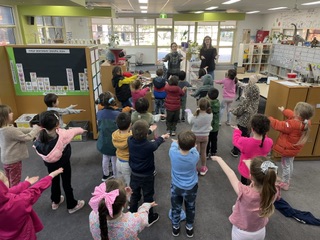
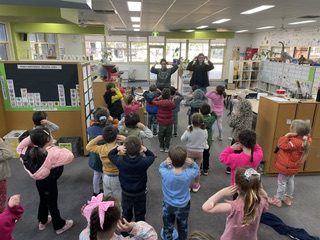
Bravo also to the Preps who have conquered the Macarena at .75 speed which is an impressive effort of coordination! Thank you to everyone for a happy couple of weeks, and best wishes for a lovely winter break. Cheerio,Deb.